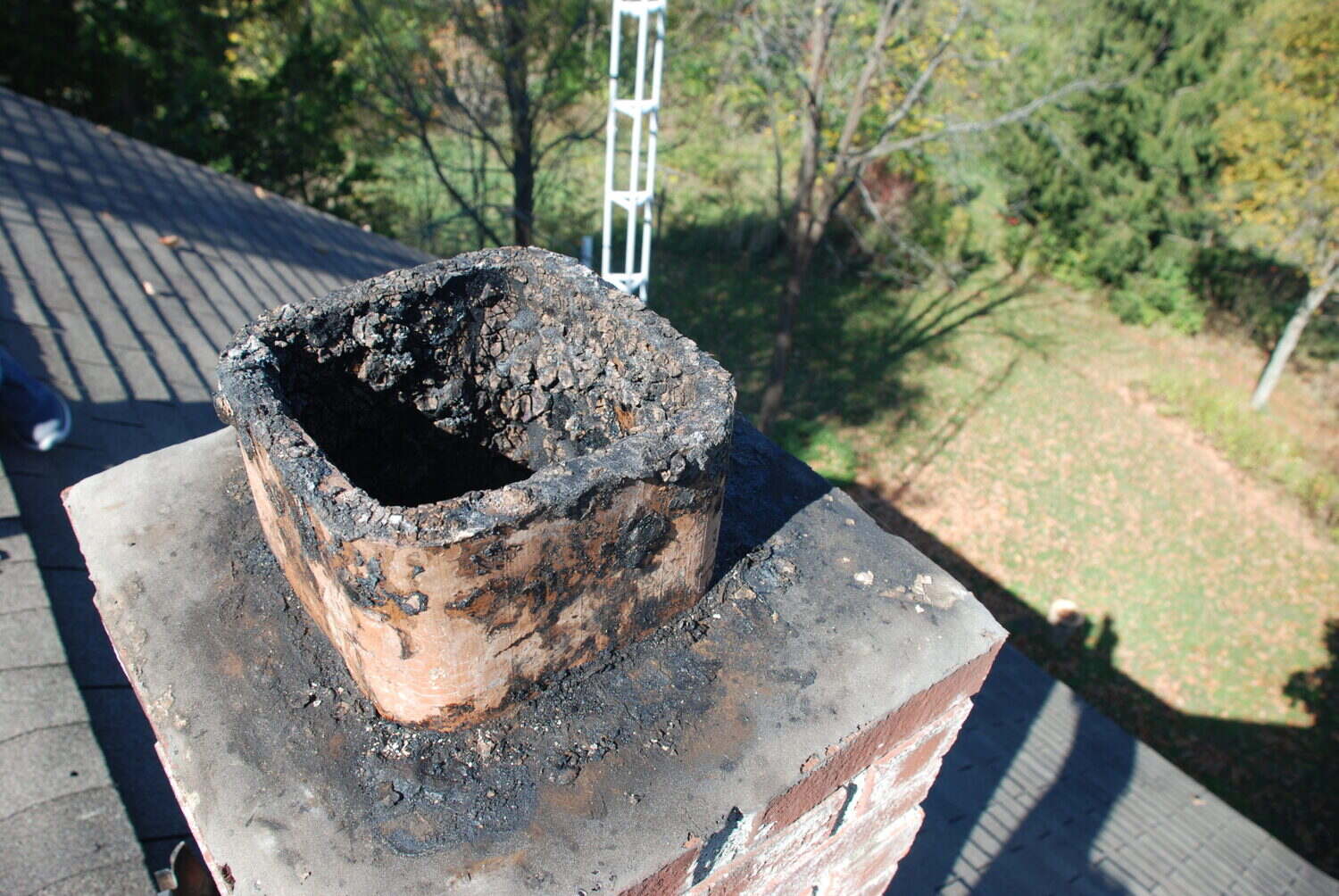Introduction
The crackling warmth of a wood-burning fireplace is a beloved winter tradition. However, lurking beneath the charming flames is a potential hazard: creosote. This sticky substance, a byproduct of burning wood, can accumulate in chimneys, posing a serious fire risk. Removing creosote is crucial for the safety of your home and loved ones, but it can be a daunting task. Through this comprehensive guide, we will empower you with the knowledge and techniques to effectively remove creosote from your chimney, ensuring a cozy and safe winter season.
Creosote is a complex substance consisting of a combination of tars and other chemical compounds. As wood burns, these substances vaporize and condense on the inner walls of your chimney, forming a dark, tarry deposit. Over time, this buildup can restrict airflow, making it difficult for smoke to escape. Consequently, creosote becomes a fire hazard. When ignited, creosote can burn fiercely, releasing dangerous levels of heat and gases.
Step-by-Step Creosote Removal
The removal of creosote involves a meticulous process to prevent spreading the dangerous substance throughout your home. Here’s a comprehensive guide to help you navigate the process safely and effectively:
1. Safety First
Before embarking on the removal process, safety must be your top priority. Wear protective gear, including gloves, safety goggles, and a dust mask or respirator. Ensure proper ventilation by opening windows and doors to dissipate fumes. It is highly recommended to involve a professional chimney sweep for a thorough inspection and removal of creosote, especially if the buildup is significant.
2. Gathering Supplies
The task of creosote removal requires specialized equipment to ensure safety and efficiency. Gather the necessary tools, including a chimney brush, extendable rods, a creosote remover (chemical or natural), and a sturdy vacuum cleaner. Select a chimney brush with stiff bristles designed specifically for creosote removal.
3. Accessing the Chimney
Gain access to the chimney through the fireplace opening. Using extendable rods, attach the chimney brush and carefully insert it into the chimney flue. Slowly work the brush up and down, scrubbing the walls to dislodge creosote. Regularly remove the brush and vacuum up the loosened debris.
4. Treating Creosote Buildup
Chemical creosote removers can effectively dissolve the stubborn substance. Follow the manufacturer’s instructions carefully, applying the remover to the creosote deposits. Allow the remover to dwell for the recommended time, then scrub the area with a chimney brush. Flush the chimney thoroughly with water to rinse away any remaining creosote or chemicals.
Alternatively, natural creosote removers, such as vinegar or baking soda, provide a safer and eco-friendly option. Create a solution of equal parts vinegar and water, or a paste of baking soda and water. Apply the solution or paste to the creosote and allow it to work its magic. Scrub the area with a chimney brush and rinse with water.
5. Rinse and Vacuum
As you remove the creosote, it is crucial to frequently vacuum up the loosened debris. This prevents the spread of creosote throughout your home and ensures a thorough cleaning. Use a powerful vacuum cleaner with a hose attachment to effectively remove all traces of creosote.
6. Inspect and Monitor
After the removal process, inspect the chimney thoroughly for any remaining creosote or damage. If significant creosote buildup persists or if you notice any cracks or damage to the chimney, it is essential to seek professional assistance from a qualified chimney sweep.
Regular monitoring is crucial to prevent creosote buildup and maintain the safety of your chimney. Inspect the chimney annually and schedule professional cleaning and maintenance as needed.
Expert Insights and Actionable Tips
To further equip you with the knowledge and skills to effectively remove creosote from your chimney, we have consulted with industry experts and gathered actionable tips:
1. Preventative Measures
Seasoned chimney sweeps emphasize the importance of preventative measures to minimize creosote buildup. Use well-seasoned, dry firewood that burns efficiently, producing less creosote. Avoid burning softwoods, such as pine or fir, as they tend to produce more creosote. Additionally, ensure the damper is fully open while burning fires to promote proper airflow and minimize creosote accumulation.
2. Regular Cleaning
Regular chimney cleaning is a cornerstone of creosote management. It is recommended to have your chimney inspected and cleaned annually by a qualified professional. Regular cleaning removes creosote buildup before it becomes a significant hazard.
3. Chemical vs. Natural Removers
When selecting a creosote remover, consider both chemical and natural options. Chemical removers, while effective, can be harsh and require careful handling. Natural removers, such as vinegar or baking soda, are safer and more environmentally friendly, but may require multiple applications.
4. Ventilation and Safety
During the creosote removal process, proper ventilation is paramount. Open windows and doors to dissipate fumes and prevent inhalation of harmful substances. Always wear protective gear, including gloves, safety goggles, and a dust mask or respirator.
Conclusion
Removing creosote from your chimney is a crucial task for the safety of your home and loved ones. By following the comprehensive guide and incorporating expert insights, you can effectively tackle this task, ensuring a safe and cozy winter season. Remember, regular maintenance and professional inspections are essential to prevent creosote buildup and maintain the longevity of your chimney. Embrace the warmth of a crackling fire with confidence, knowing that your chimney is clean and free of potential hazards.

Image: fireplaceuniverse.com

Image: storables.com
How To Get Creosote Out Of Chimney
https://youtube.com/watch?v=0r5_2GcSu_4







